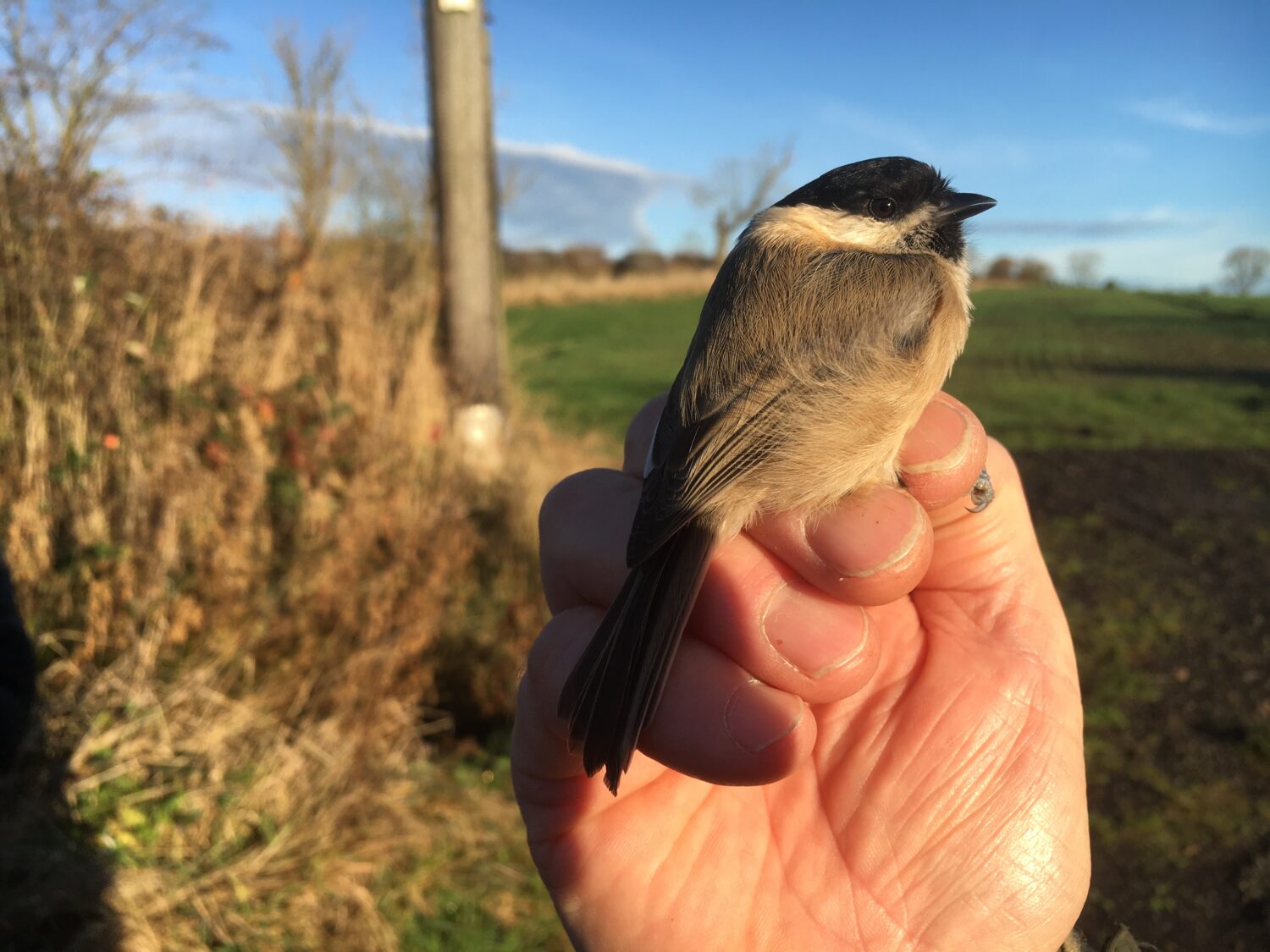North East ornithologist, Phil Hanmer, shares a new update summarising bird ringing across Northumberland throughout November.
Returns from the British Trust for Ornithology (BTO) this month included a Blue Tit (APK5924) that was originally ringed as a juvenile at Swarland back in July but has apparently taken up residence at Howick where we controlled it very much alive on the 9 October. This is not a large movement but it’s a little unusual for a Blue |Tit. Meanwhile, a male Goldcrest (NKH618) that we ringed on the 8 Oct at Howick had moved to Whitburn (controlled by the Whitburn Ringing Group on the 13 October). This bird weighed only 5.6g, a normal weight for this beautiful little bird, and still weighed 5.6g when it was controlled. Turning to Barn Owls the sad news was received that an owl (GY28075) hatched south of Brinkburn in June was found injured east of the A1 on 24 October and had to be euthanised by a vet. Another owl (known to members of the Natural History Society of Northumbria, Hancock Mus. GV92583) to have successfully nested at Gosforth Park in 2020 was found dead in a box on the 26 August this year, at Gosforth Nature Reserve. The fascination of this bird is that it had been originally ringed (as an owlet) at Woodhurst in Cambridgeshire in July 2019! In order to monitor the effect of this current winter on our local owls please report findings of dead owls to myself or your local Natural History Group/Society, especially if they have a ring number.
We did ring at Howick on the 15 October catching 39 birds (25 new and 14 retraps). The retraps included a male Chaffinch first ringed (as an adult) back in August 2015, so at least 6 years. old. There was also a retrapped Yellow-browed Warbler; the same bird that we ringed back on the 9th. Its weight was still the same at 5.9g; quite remarkable given it had experienced a week of bad local weather. The new birds covered: Bullfinch, Great Tits, Blue Tits, Dunnock, Chaffinch, Tree Sparrow, Coal Tit, Treecreeper and Goldfinch; while a Raven passed overhead. Returning on 16 October, we captured 73 birds (48 new and 25 retraps). The new birds included ‘still moving migrants’ like Redwings, Blackcap and Goldcrest; as well as our more local resident tits; Goldfinch, Bullfinch, Robin and another new juvenile Treecreeper. On the 23rd we captured another 66 birds (52 new and 14 retraps). There seemed to be an influx of Goldcrests and many Goldfinches had homed in on the free birdseed. We held the last session on 10 November and captured 69 birds (47 new and 22 retaps). We started with a late migrating Blackcap, a few Goldcrests and some continental looking (dark beaked) Blackbirds. However, there were many more local ‘tits’ including several that were retraps from 2019.
A rough analysis of the ringing season at Howick shows that we captured 878 birds in 2021 (compared with 1,143 in 2020):
116 new adults (compared to 153 in 2020); 505 new juveniles (compared to 594 in 2020), 31 species (compared to 36 species in 2020).
However, a glance back to previous years shows that the 2021 figures were actually quite consistent with 2017, 2018 and 2019. So it’s the 2020 figures which are the outlier; showing an exceptionally good nesting season in 2020 (after the warm early spring weather).
Ringing with colleagues near East Linden on 11 November, we captured 38 birds (20 new and 18 retraps) including 2 retrap Willow Tits; one an adult from 2019 and the other a juvenile we ringed in September. There was also a new juvenile Marsh Tit and an assortment of tits and Tree Sparrows. Returning on 22 November, we captured 58 birds (31 new and 27 retraps). Included in the retraps was the adult Willow Tit from 11 November. We also retrapped a juvenile Marsh Tit first ringed on the 11 November. I can also report an observation from another site near Fontburn Reservoir of Marsh Tits eating Honeysuckle berries – not a food I would have expected these tits to eat).
Currently waiting for the weather to improve so we can get on with making, repairing; and putting up new bird boxes for a variety of species including owls. Ideas for good sites are always welcome as are donations (have you seen the cost of wood now? – don’t believe anyone who tells you inflation is not going up!).
